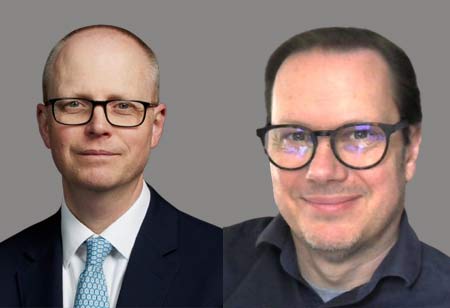This was a quote from Bronek Masojada, former chairman of Bermudan insurer Hiscox, at a London event in support of the Insurance Museum in 2024.
Masojada’s point was that very few people, if any, voluntarily choose to work in the insurance industry. The two authors of this article are two such people and we’re two of the biggest fans of insurance you’ll find.
Why do we end up here without consciously meaning to? We’d suggest there are two reasons. The first is a general lack of intrinsic, emotional attachment to insurance as a service and as a product. If you contrast this with our savings, investments or possessions, there is a defined value that we can attach to them. Insurance doesn’t have that. It offers protection against a potential future event that may never arise. Insurance has no material value most of the time. It is seen as an overhead and an unwelcome cost.
Until the moment that you need that insurance policy—whether it’s to cover the costs of a medical procedure, to repair damage to your car, phone or roof, to pay for a funeral or for your mortgage when you are unable to work. At that point, the true utility and value of insurance reveal themselves. That’s the point where we stop begrudgingly paying out for our insurance policy and feel relieved that we took it out, however many years ago that might have been.
The second reason comes down to education. In the UK, insurance doesn’t feature anywhere in the general curriculum at primary school. Increasing efforts to provide financial education, often delivered in partnership with financial institutions, are invariably focused on banking and savings.
Introducing Insurance Early
There is an obvious place in the primary school curriculum to insert the first seeds of insurance understanding
There is a disconnect between a young person first encountering insurance through purchasing it for a car, scooter, holiday or contents and choosing their career. It’s the wrong way round; they choose their career and then discover what insurance is.
There is an obvious place in the primary school curriculum to insert the first seeds of insurance understanding. It is during the coverage of the Great Fire of London, which remains a critical part of the primary school history curriculum. Children in year two learn about the cause of the fire, the private fire services that followed in its wake and the changes made to how buildings were constructed to ensure a similarly devastating fire didn’t occur again. Children aren’t taught that those private fire engines were provided by newly formed fire insurance companies in the City of London. Thus, a key opportunity to introduce the notion of insurance to young minds is utterly lost.
Planting the Seeds of Insurance Understanding
Children as young as seven, in year two, start forming their ideas about what they want to do “when they grow up”. Isn’t that the perennial question we always ask a child? They may not decide on an actual job, but they are thinking about what they are good at, what they enjoy, and what they are not good at. Children are heavily influenced by their family, friends and teachers. The Insurance Museum’s developing education programme, starting with the Great Fire of London and continuing through key stages 2 and 3, will open up the world of insurance—what it does and how it works. It can plant seeds.
“They worship everything and they value nothing,” says Ryan Gosling’s character in La La Land. He refers to Los Angeles’s love-hate relationship with its own history, but the same could be said about how we approach insurance’s rich history, heritage and societal contribution.
The story of insurance is remarkable, but the most remarkable thing is that people know nothing about it. Insurance heritage exists in archives and museums, and some of it is well looked after, but much of it is not. Insurance companies merge, are taken over and the corporate heritage is stored away in basements and cupboards. People move on, interest wanes and the heritage is forgotten. This results in there being no public voice for insurance heritage. The Insurance Museum is adddressing this, mapping the insurance heritage landscape and seeking to save collections and archives before they vanish. It is planning exhibitions, events, education programmes and highlighting those incredible stories.
If you’re reading this, then, like both of us, you’re already a fully paid-up insurance nerd and probably don’t need convincing. However, feel free to show your support─seek out your local insurance museum, library or society and amplify the true value that insurance brings to all of our lives. The importance of insurance isn’t going to celebrate itself.


